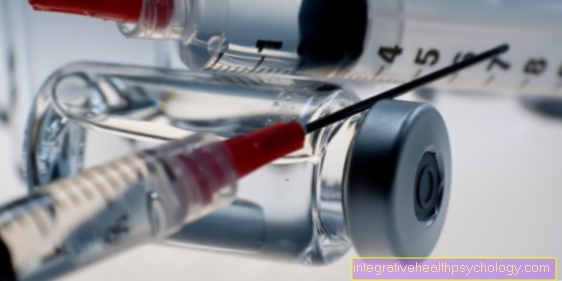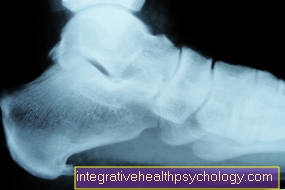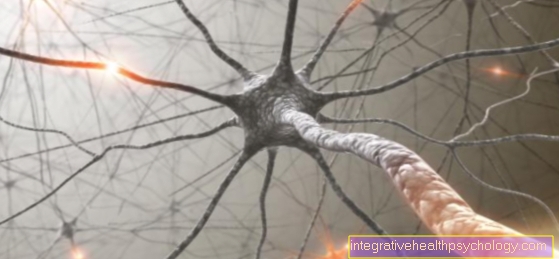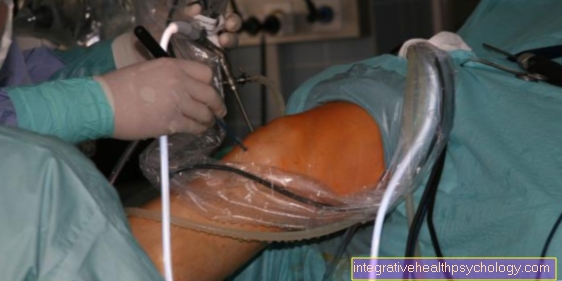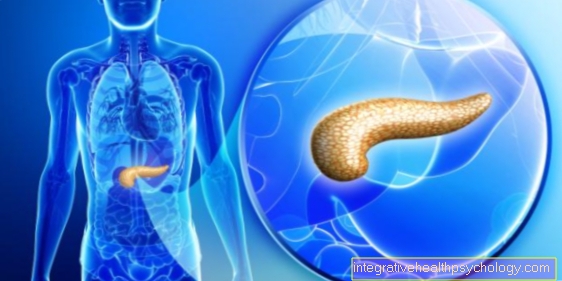The quadriceps tendon
Introduction - What is the Quadriceps Tendon?
The quadriceps tendon is the insertion tendon of the M. quadriceps femoris muscle. This is the front of the thigh and is the largest muscle in the body. It is also essential for running. This gives the quadriceps tendon a special role in the human body. On the one hand, it has to be very resilient, as it is subject to massive loads. On the other hand, it must not interfere with normal running movements. It extends from the lower edge of the quadriceps femoris muscle over the knee joint to the upper edge of the tibia. The tendon thus bridges a joint. Furthermore, the kneecap is embedded in it as a sesamoid bone, which means a more favorable lever for the force generated by the muscle.

Quadriceps tendon anatomy
The quadriceps tendon has type I collagen connective tissue microscopically like every muscle tendon in the human body. This is very tensile and adapted to the prevailing needs. This tensile strength enables the body to build up a great deal of force without tearing the tendon. This is particularly essential for the high loads placed on the quadriceps tendon.
If one looks at the quadriceps tendon macroscopically, several peculiarities become apparent. For one, it is one of the strongest tendons in the entire body. It is particularly thick and has a large area in cross section. This is also related to the high prevailing loads. On the other hand, it has an embedded bone, the kneecap. With the exception of the back, the kneecap is completely encased by tendon tissue within the quadriceps tendon, approximately at the level of the knee joint, with the majority of the bone lying slightly above the joint space. The kneecap serves as a sesame bone. This means that it is an extension of the lever, which means that the quadriceps femoris muscle has a greater effect on the extension of the leg.
Overall, the quadriceps tendon extends from the lower edge of the quadriceps femoris muscle to the upper part of the tibia. The upper part of the tendon flows smoothly into the muscles of the large leg extensor. The lower portion of the tendon inserts on a bony protrusion just below the knee joint space.
Innervation
The innervation, i.e. the functional supply of a part of the body or a tissue with nerve tissue of the quadriceps tendon, takes place via two separate nervous systems. On the one hand, it is supplied by vegetative nerve fibers that are important for the unconscious body perception. This includes, for example, measuring the tension on the quadriceps tendon. These parameters also include the length or the stretching of the muscles and the flexion of the knee joint. Furthermore, innervation takes place through consciously controllable nerve fibers. These fibers belong to the femoral nerve. This comes from a network of nerves that originates in the lumbar cord of the spinal cord. The femoral nerve actually has the task of controlling the contraction of the quadriceps femoris muscle. However, some fibers in the nerve also reach the quadriceps tendon.
Function of the quadriceps tendon
In healthy people, the quadriceps tendon is mainly used to transmit power from the quadriceps femoris muscle to the lower leg. This means that when it contracts, the tendon also tightens. This direct line-up of muscles and quadriceps tendons means that the force is transmitted directly.
The fact that the quadriceps tendon inserts firmly into a bony structure on the shinbone causes movement of the lower leg. The position and course of the quadriceps femoris muscle and the position and course of the quadriceps tendon result in what is known as flexion. This means that when the quadriceps femoris muscle, the large leg extensor, contracts, the knee is straightened. The quadriceps tendon, in conjunction with the attached muscles, therefore plays an essential role in standing upright. Without the muscles and the quadriceps tendon, this would be inconceivable, as otherwise the legs would collapse due to gravity. Therefore, when standing, there is always a certain amount of tension in both structures.
The kneecap is also embedded in the quadriceps tendon. It serves as a fixation of this in its imaginary place. The position of the kneecap in conjunction with the quadriceps tendon enables the large extensor to work more effectively. There is continuously a greater leverage effect due to the anatomical position. As a result, standing is less strenuous overall and the combination of muscle and quadriceps tendon makes it possible to apply greater forces.
Quadriceps tendon disorders
Quadriceps tendon rupture
A quadriceps tendon rupture is a complete or incomplete tear in the insertion tendon of the quadriceps femoris muscle, the great extensor muscle. The tear usually occurs just above the kneecap or between the kneecap and the muscles. A quadriceps tendon rupture manifests itself as sudden, sharp, sharp pain in the knee area. The causes can be varied. A common reason for a quadriceps tendon rupture is overstressing following minor injuries or existing degenerative changes due to old age.
The triggering burden often does not have to be massive for this. Even normal loads in the context of sporting activity are sometimes sufficient. Another possible cause of a quadriceps tendon rupture is massive overuse. This is common in some sports. For example, weight training with a lot of weight in the flexed position can cause a rupture. It can also occur when moving against resistance.Rarely is the quadriceps tendon injured by a direct injury such as a cut. Diagnosis is usually based on a clinical examination. To do this, an attempt is made to feel a gap between the kneecap and the muscle. In addition, the knee should be tried to straighten. In difficult cases, other imaging procedures can be used. The therapy usually consists of an operation. Since the tendon ends can recede a lot, they are fixed to one another with a suture. With appropriate therapy and aftercare, the same condition as before quadriceps tendon rupture can be achieved. However, the overall situation can often also deteriorate in older patients.
Read more about the topic: Quadriceps tendon rupture here
Quadriceps tendonitis or irritation
Inflammation of the quadriceps tendon is a sign of chronic overload or chronic misalignment when using the quadriceps tendon. This inflammation of the quadriceps tendon makes itself felt as pain. At the beginning of the inflammation, they are not permanent, but only occur with some movements. These movements usually include flexion and internal rotation. In later stages the pain can become permanent and independent of the position. There may also be swelling or a feeling of stiffness. Improvement is sometimes provided by moderate training so that the structures are warmed up.
Quadriceps tendonitis is more common in people who use their knees while exercising. These are mainly running-intensive sports with many and quick changes of direction. This includes all indoor sports such as handball or volleyball. This also includes football, tennis and basketball. In addition, cyclists often experience irritated quadriceps tendons, as they very often perform a constant movement under stress. Diagnosis is based on a clinical examination. In special cases, further diagnostic imaging can be used. Therapy consists in reducing the load for up to a few weeks. This can range up to a complete cessation of the actuation. Wearing orthoses can also help. The use of kinesiology tape is also helpful.
Find out more about quadriceps tendonitis here
Quadriceps tendon pain - these could be the causes!
The causes of pain in the quadriceps tendon range from traumatic causes to inflammatory causes to degenerative causes. In some degenerative diseases, there may be a decreased blood supply to the tendon. This leads to a continuous deterioration of the condition over the years, which at some point causes pain. The resulting microtraumas can cause inflammation of the quadriceps tendon. An inflammation can, however, also arise due to acute inflammatory processes or be caused by continuous overloading or continuous improper exposure. The direct impact of force is one of the traumatic events. A blow to the knee, for example, can lead to minor as well as major injuries to the quadriceps tendon. All of the causes of the pain individually increase the risk of quadriceps tendon rupture. Nevertheless, the likelihood of this is not very high.
How do you stretch the quadriceps tendon?
The quadriceps tendon is stretched by stretching the unit, as with all muscles and tendons. Because the movement made by contraction of the quadriceps femoris is a stretching of the knee, the knee must be bent when stretching. It is also important to warm up briefly before stretching in order to prevent possible damage. The simplest stretching exercise is to bend the knee while holding the foot by the buttocks. If this is too difficult to do while standing, you can hold on to it or do the exercise while sitting. In addition, care should be taken to ensure that the upper body remains straight. A variation on this exercise also stretches the groin. For this, the exercise is not performed with the other leg in extension, but bent forward like a lunge and the leg to be stretched is placed with the knee on the floor while the foot is held by the buttocks with the hand.
Read more about stretching here
Calcifications in the quadriceps tendon
Calcifications on the quadriceps tendon are relatively common and can even occur in young people. The causes are varied and can be degenerative or inflammatory in nature. There is seldom pain at the beginning. In later stages there may be pain, decreased movement, redness, and swelling. Calcifications also increase the risk of quadriceps tendon rupture. However, calcification often occurs even after a rupture. The diagnosis is made using ultrasound or X-ray images. Anti-inflammatory drugs such as steroids or NSAIDs (e.g. ibuprofen) are used for therapy. Furthermore, the calcifications can be shattered from outside by means of sound.
Learn more about the topics: Quadriceps tendon rupture and quadriceps inflammation
Can you relieve the quadriceps tendon with a bandage?
The quadriceps tendon can be relieved by wearing a bandage. In general, this can be used for many diseases or injuries to the knee. A bandage increases the stability of the knee and protects the quadriceps tendon. This can be helpful for both traumatic events and an inflamed quadriceps tendon. A bandage also provides relief in the event of overload.
Recommendation from the editorial team!
Find out more about the following topics here:
- The thigh muscles
- Knee joint disease
- Human tendons



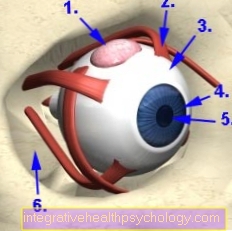




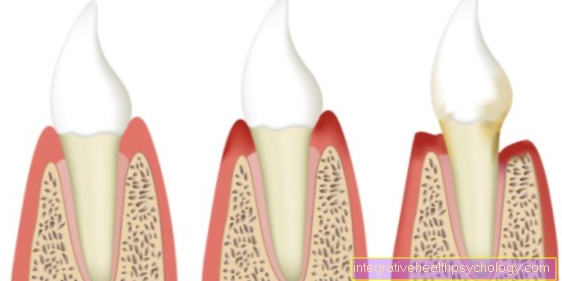


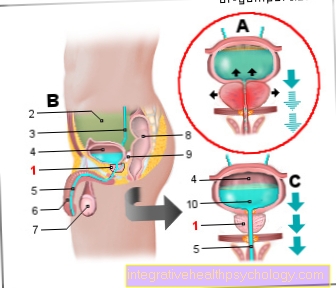

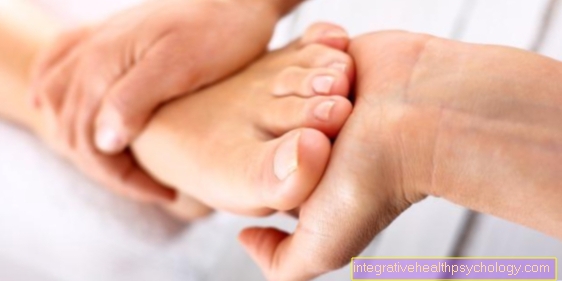

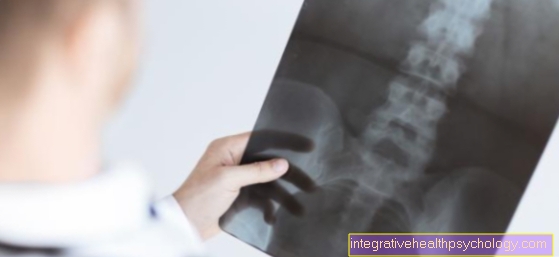
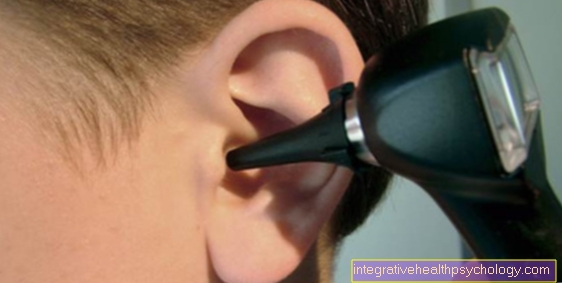
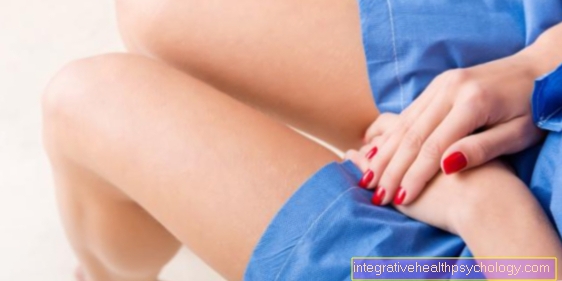
.jpg)


